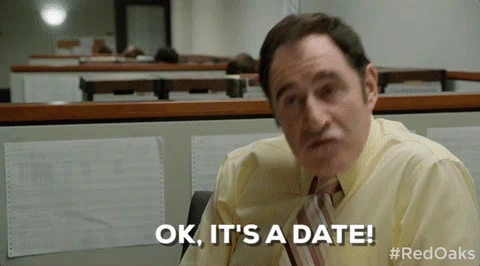Take a moment to think about how you approach decisions.
When you've needed to make decisions, have you ever...
procrastinated?
been anxious and/or frustrated?
been indecisive?
been unhappy with your choice?
These are all symptoms of choice overload.
Choice overload is...
...what happens when someone is overwhelmed by making a decision between different options. They start thinking about the potential outcomes and risks of making an incorrect choice.
Are you often overwhelmed by options? These 4 steps will help you move from indecision to action — swiftly and smartly.
Step 1: Create a timeline for your decisions
When faced with a significant life event or purchase, it's easy to feel like everything needs to be decided right now.
It doesn't.
Relax! Few decisions are truly permanent. People move, transfer schools, switch jobs, and careers every day.
Here's what you need to do when you first encounter choice overload:
Write down each decision you must make and when it really must be decided. Be honest!
Write down a list of questions and thoughts you're having about the decision.
Create a timeline to answer each item on your list.

Pro tip: don't jump ahead!
For example, you don't need to agonize over whether to accept a new job in a new state before you've even had your interview.
Test your knowledge:
Mary is starting her senior year in high school. She knows she wants to go to college next year but feels overwhelmed by all the decisions she has to make.
Because of choice overload, she keeps asking herself: Will I choose the wrong school? What kind of housing should I look for? What do I want to major in? How far do I want to live from home?
What should Mary do?
 Do nothing — it's too risky to make the wrong decision.
Do nothing — it's too risky to make the wrong decision.
 Take a career test, apply to top schools in her budget, and compare housing options.
Take a career test, apply to top schools in her budget, and compare housing options.
 Write down her concerns, get advice, and make a decision plan.
Write down her concerns, get advice, and make a decision plan.
 Let someone else decide so she can avoid making mistakes.
Let someone else decide so she can avoid making mistakes.
Quiz
What advice would you give Mary?
Step 2: Take a realistic look at yourself and your situation
Making a good decision starts with taking the time to think honestly and realistically about your life. What are your obligations, strengths, weaknesses, wants, needs, likes, and dislikes?

When making decisions, consider...
Responsibilities:
What responsibilities do I currently have?
How does this choice affect my other obligations?
Time:
How much time will this need? How much do I want to give to this?
What time(s) of day am I the most motivated to invest my time?
Cost:
Will there be an initial cost or ongoing expense?
How much can my budget afford?
Impact:
What impact could this have on my life and goals?
Will anyone else be impacted by my choice?
Maintenance:
Will it need maintenance, care, or regular payments?
Do I realistically have the time and resources for it?
Usage:
How often will I really use it?
What requirements, features, or accessories do I need to use it the way I want to?
Learning curve:
Will I need to learn anything? How long will it take to learn?
Will I need expert help for installation or maintenance?
 Test your knowledge:
Test your knowledge:
Harry is starting a medical residency and moving into his first apartment. He’s excited to finally adopt a dog. Harry has always wanted a dog but can’t decide on a breed.
What could Harry do to confront choice overload?
 Adopt a mixed breed from a shelter — it's healthier, more unique, and saves a life.
Adopt a mixed breed from a shelter — it's healthier, more unique, and saves a life.
 Volunteer at a shelter or visit a dog park to learn about breeds and dog care.
Volunteer at a shelter or visit a dog park to learn about breeds and dog care.
 Start researching and buying supplies now, so he’s ready once he chooses.
Start researching and buying supplies now, so he’s ready once he chooses.
 Wait and see what his routine and life will be like during his medical residency.
Wait and see what his routine and life will be like during his medical residency.
Quiz
What advice would you give Harry?
Step 3: Do your research
 Photo by Glenn Carstens-Peters on Unsplash
Photo by Glenn Carstens-Peters on UnsplashWhen making a decision, sometimes all it takes is one piece of information you didn't know or a talk with someone to clarify something you're confused about. Just remember: ultimately, YOU are the person who will be using and living with your choice, not the other person.
To deal with choice overload, you can...
Use your connections: Reach out to people you know who have had to make the same or a similar choice.
Test your options: Try a demo, sign up for a free trial, visit in store, or volunteer to get hands-on experience.
Start small: Look for a cheaper or temporary version to use and explore, before making a big splurge.
Research online: Use sites such as websites, blogs, and crowdsourcing to gather more information. Popular sites are Reddit,Quora, YouTube, or Rumie Learn (you might have heard of the last one. 😉)
AI: Use ChatGPT or another AI tool to gather information (just be aware of AI's limits!)
Step 4: Use a graphic organizer
Important decisions often have many small and important details that you need to remember.
Use a T-chart to compare the pros and cons of an "either/or" decision. This provides clarity when everything is in black and white.
A spreadsheet may be a better way to organize more complex problems with multiple choices and many details to recall. When I decided to get a new phone and was considering a different carrier, this is a blank copy of the spreadsheet I used.

Making small decisions will help you reduce the feeling of choice overload. Your final, larger decision will become easier to make!
Take Action
I hope you've learned to make better, more informed decisions more easily. Remember to listen to others, but select the best decision for you and your situation.

To tackle choice overload in your life:
Your feedback matters to us.
This Byte helped me better understand the topic.


